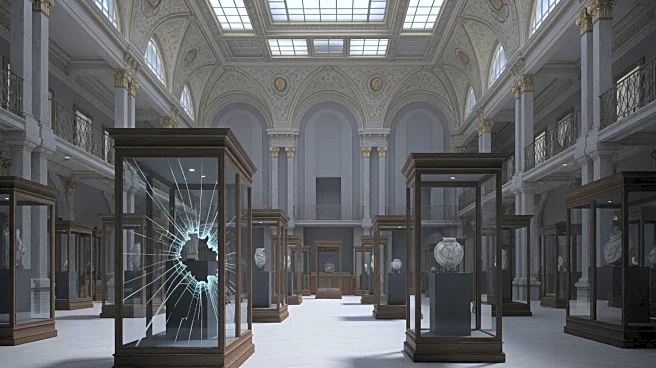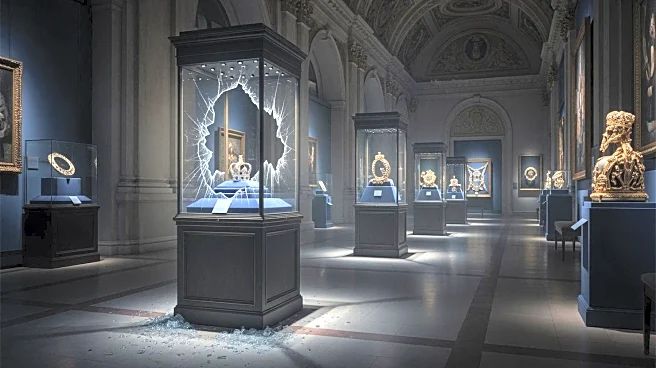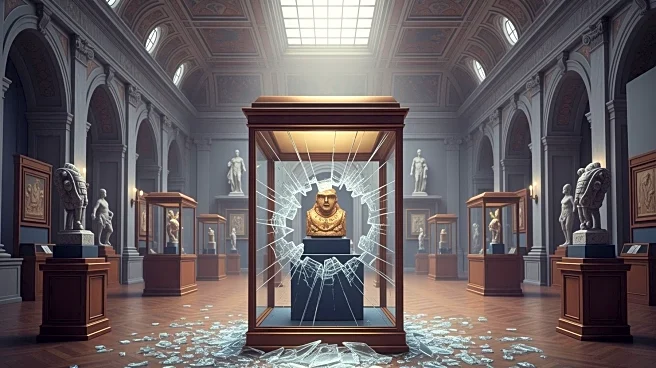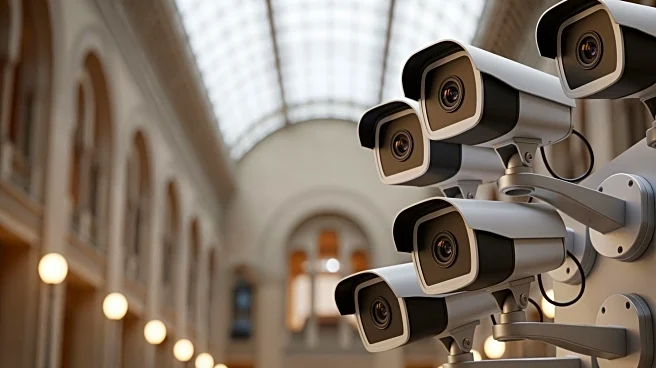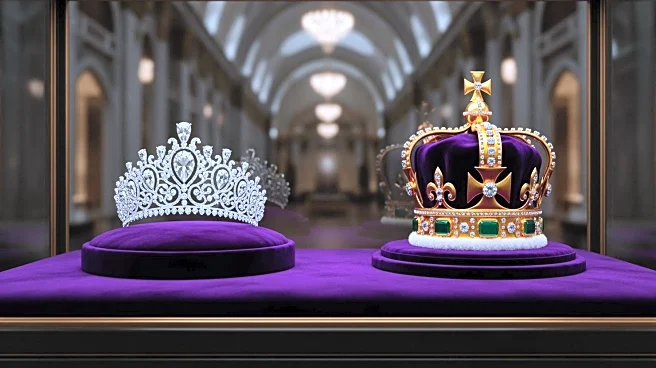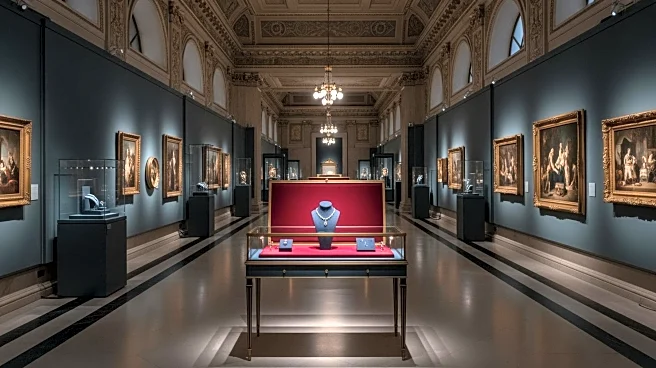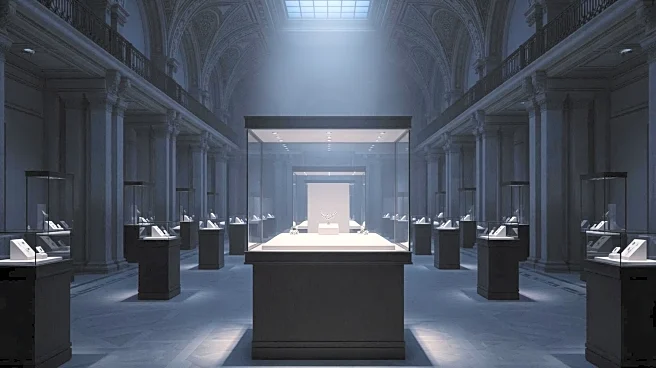What's Happening?
A daring heist at the Louvre Museum saw thieves steal millions in royal jewelry in under 10 minutes. The robbers used scooters, a basket lift, and mini chainsaws to smash display cases near the Mona Lisa, making off with tiaras, necklaces, and brooches
tied to French royalty. Authorities describe the thieves as highly organized, and President Macron has vowed that the stolen jewels and criminals will be found.
Why It's Important?
The theft of these royal jewels represents a significant cultural and historical loss for France. The incident raises concerns about the security of valuable items in museums, potentially impacting tourism and public trust in cultural institutions. The stolen artifacts are irreplaceable, and their loss could affect the study and appreciation of French history and heritage. The heist may prompt museums worldwide to reassess their security protocols to prevent similar occurrences.
What's Next?
French authorities are conducting an extensive investigation to locate the thieves and recover the stolen items. The museum remains closed as the investigation proceeds, and there may be increased security measures implemented at the Louvre and other cultural institutions. The international art community may call for cooperation to track down the stolen artifacts, and discussions on enhancing security protocols for valuable displays are likely.
Beyond the Headlines
The heist underscores the ethical and legal challenges in safeguarding cultural heritage. It raises questions about the balance between accessibility and security in museums, and the potential for illicit trade of stolen artifacts. The incident could lead to long-term changes in how museums protect valuable items, influencing global policies on cultural preservation.
